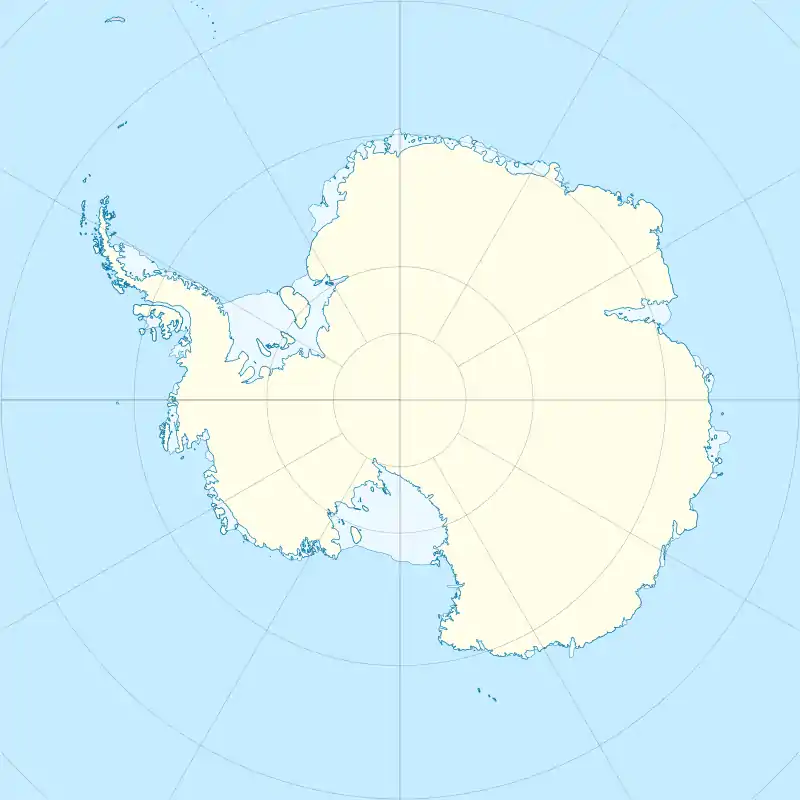 Joubin Island Location in Antarctica | |
| Geography | |
|---|---|
| Location | Antarctica |
| Coordinates | 64°47′S 64°27′W / 64.783°S 64.450°W |
| Archipelago | Palmer Archipelago |
| Administration | |
| Administered under the Antarctic Treaty System | |
| Demographics | |
| Population | Uninhabited |
The Joubin Islands are a group of small islands lying 6 kilometres (3 nmi) south-west of Cape Monaco, Anvers Island, at the south-western end of the Palmer Archipelago of Antarctica. The islands were discovered by the French Antarctic Expedition, 1903–05, under Jean-Baptiste Charcot, and named by him for Louis Joubin, the French naturalist.[1] They have been designated a Restricted Zone under ASMA 7 — Southwest Anvers Island and Palmer Basin — which includes the marine area extending 50 metres (55 yd) from the shorelines.[2]
Environment
The islands share a volcanic and granitic geological origin with Anvers Island. Their vegetation, which is typical of the region, consists of a variety of mosses, lichens and algae, as well as the flowering plants Antarctic Hairgrass and Antarctic Pearlwort.[2]
Important Bird Area
The islands have been identified as an Important Bird Area (IBA) by BirdLife International because they support a breeding colony of about 250 pairs of imperial shags. Other birds nesting on the islands include Adélie, gentoo and chinstrap penguins as well as southern giant petrels.[2]
See also
References
- ↑ "Joubin Islands". Geographic Names Information System. United States Geological Survey, United States Department of the Interior. Retrieved 8 April 2013.
- 1 2 3 "Joubin Islands". BirdLife data zone: Important Bird Areas. BirdLife International. 2013. Retrieved 9 January 2013.
![]() This article incorporates public domain material from "Joubin Islands". Geographic Names Information System. United States Geological Survey.
This article incorporates public domain material from "Joubin Islands". Geographic Names Information System. United States Geological Survey.